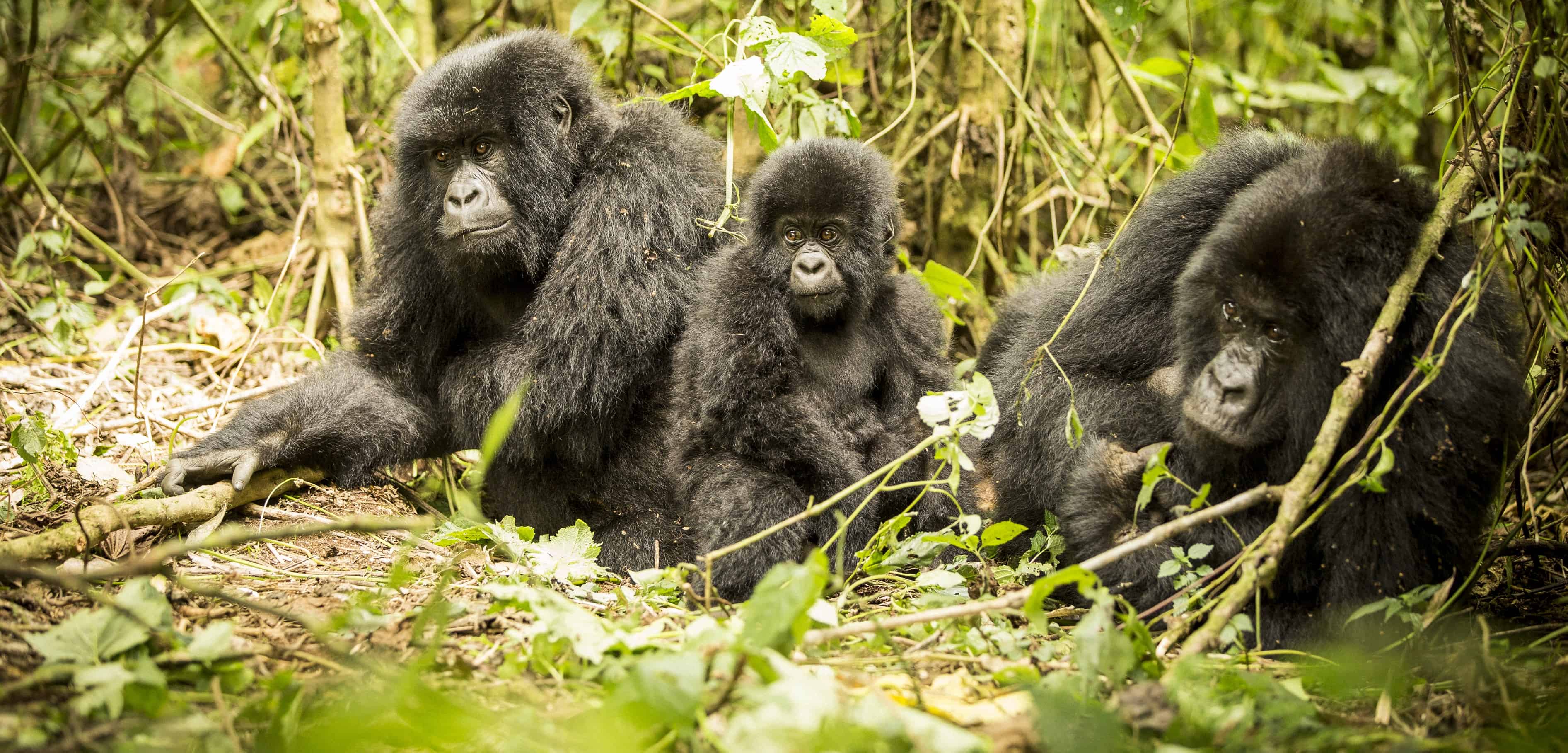 Creativecommons.org/Radio Okapi
Creativecommons.org/Radio Okapi
In 1925 King Albert I of Belgium established Virunga National Park as the first national park in Africa. Its primary purpose was to protect the mountain gorillas in the Virunga Mountains, but the park has since expanded to include the Rwindi Plains, Lake Edward and the Rwenzori Mountains - creating a more diversified park to protect a greater number of species.
The park is managed by the Congolese National Park Authorities, the Institut pour la Conservation de la Nature and the Virunga Foundation, and was designated a World Heritage Site by UNESCO in 1979. Civil wars in the region have led to an increase in poaching over the last several years but the managing entities are actively working towards improving safety in the park for both animals and visitors. The southern portion of Virunga hosts more than 3000 tourists a year.
Mountain Gorillas
 https://www.flickr.com/photos/weesam/
https://www.flickr.com/photos/weesam/
By far the biggest reason people visit the park, the mountain gorillas are one of the most critically endangered species and the park is key in raising awareness about the species.
The family bonds of the gorilla are extensive and male gorillas will work to defend their families more so than their territories. Family groups are usually around 10 individuals and include the dominant male silverback, a related, submissive silverback, two black-back males that act as sentries and three or four females that are bonded to the male for life. Young males and females stay with the family until they are between 8 and 11 years old at which time most of the males and more than half the females will set out on their own to find a new group.
Visitors to the park can opt to take a gorilla trek led by a park ranger to get a closer view of these amazing animals. Depending on where the gorillas are, treks can take two to six hours and time near the gorillas is limited to one hour.
Tongo Chimpanzees
Another favourite animal to spot is the entertaining and intelligent chimpanzee. These animals live in complex societies and the dominant male can be the physically strongest, the cleverest or even the most manipulative male. Most gain power by recruiting allies rather than fighting. Females of the group also have a hierarchy and the dominant females will remove the head male if they are not satisfied with his management.
Within the community, chimpanzees share duties of foraging and protection with dominant animals having more control. Orphaned babies are usually adopted by either males or females and females will even care for orphaned infants from other groups.
Virunga now offers a chimpanzee trek, taking visitors to the Tongo Forest to see them in their natural habitat.
African Forest Elephant
 Creativecommons.org/Radio Okapi
Creativecommons.org/Radio Okapi
The smallest of the elephant species, the African Forest Elephant is still the third largest terrestrial animal and it can be found exclusively in the Congo Basin. The male rarely grows higher than 2.5 metres high and weighs in at around 2.7 tonnes. The Pygmy elephants, also found in the Congo Basin, are thought to be a sub-group.
Poaching and civil unrest have led to labeling Forest Elephants as vulnerable species and some estimates suggest they could become extinct within 10 years without careful management. Park rangers often risk their lives to protect these amazing animals from poachers.
Okapi
Also an endangered species, these guys look kind of like a zebra, but they’re really related to giraffes. Like giraffes they have blue-grey tongues and use them to strip leaves from tree branches. The okapi’s tongue is so long that it uses its tongue to clean its ears and eyelids.
After more than 50 years with no sign of okapi in Virunga, park officials spotted evidence of their existence in 2006, and one was caught on camera in 2008. Along with Virunga, the Okapi Conservation Project is working towards protecting the species from extinction. They can be found in the northern section of the park, mainly along the Semliki River in the valley.
Giraffes
The tallest terrestrial animal, giraffes roam the savannas and grasslands of the park. Although often seen in groups, they are solitary animals and only congregate when convenient. In addition to having a curiously long and dark tongue, giraffes have been known to take naps while resting their head on their own hips. The vertebrae are ball-and-socket joints that give the long neck extensive flexibility – more so than any other animal.
Hippopotamus
Also found in the Rwindi plains of the central section, the hippo population was once the world’s largest, but it declined during the years of warfare. Although they are making a recovery, hippos are still listed as a vulnerable species and needs protection. The distinctive shape of the animal makes it seem as though it would be a lumbering creature, but they are capable of outrunning a human on land and are even more agile in aquatic settings. They are aggressive and unpredictable, ranking among the most dangerous animals in Africa. Curiously, despite looking somewhat like a giant pig, their closest living relative is the whale and other cetaceans.
 https://www.flickr.com/photos/davidbygott/
https://www.flickr.com/photos/davidbygott/
Cats
Leopards, lions and other carnivores roam freely through the park, concentrating on the grasslands where the herbivores graze. Lions are listed as a vulnerable species and destruction of their habitat is thought to be the major cause of this. The leopard is less threatened, mainly due to their adaptability. Leopards can survive in habitat ranging from desert to rainforest and eat any animal they can catch.


